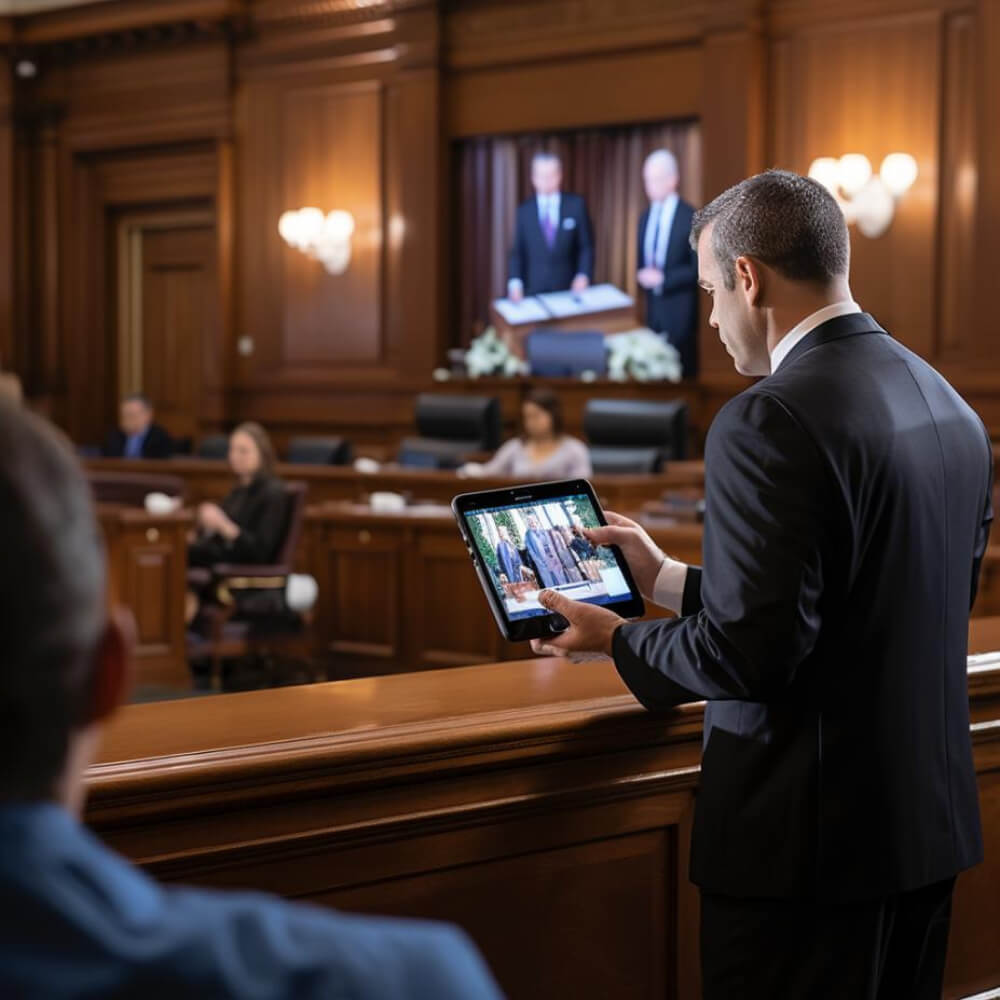In the digital world we navigate today, cell phones are more than just gadgets; they're extensions of our lives. We use them for everything, from chatting with friends to sealing business deals. But what happens when these personal devices get thrust into the spotlight of legal disputes, especially in eDiscovery? This exploration dives into the nuances of cell phone retention in the eDiscovery world, illuminating the significance, legal intricacies, and best practices involved.
What is Cell Phone Retention?
Imagine your cell phone as a digital diary, brimming with texts, calls, and other electronic imprints. Cell phone retention is about preserving this treasure trove of data when the courts or procedural rules demand it. As these devices become pivotal in legal battles, safeguarding relevant data becomes essential for eDiscovery, ensuring that no digital stone is left unturned.
Think of cell phones as wells of information in today's legal landscape. They're goldmines for investigators and legal eagles, offering insights that can sway cases. But it's not just about holding onto the data; it's about maintaining its veracity and integrity, especially when the requesting party scrutinizes every piece of evidence. Every step, from capturing to storing this data, needs a level of care commensurate with contemplated damages or criminal sanctions to ensure the data's story remains untainted.
Yet, amid this digital dance, the often-overlooked hero is metadata. It's the backstory of each piece of data, telling you when and how it was created or altered. This context is invaluable, sometimes holding the key to the credibility of the evidence. Thus, preserving both the data and its narrative is paramount.
However, this retention journey isn't without its ethical quandaries. Cell phones are private realms, packed with intimate details. Navigating this landscape requires a delicate balance, respecting privacy while retaining critical evidence. Moreover, the approach isn't universal; it morphs based on the case's nature and legal requirements
As technology evolves, so do the challenges. New apps and communication platforms constantly expand the data horizon, pushing legal professionals to continually adapt and stay abreast of retention tactics to navigate these digital waters successfully.
Importance of Mobile Retention in eDiscovery
 In the tapestry of modern communication, cell phones are vibrant threads, holding conversations and secrets that can be pivotal in legal scenarios. The importance of mobile retention is crystal clear; it's about ensuring these digital whispers aren't lost or manipulated.
In the tapestry of modern communication, cell phones are vibrant threads, holding conversations and secrets that can be pivotal in legal scenarios. The importance of mobile retention is crystal clear; it's about ensuring these digital whispers aren't lost or manipulated.
Mobile retention is the art of preserving mobile data for legal purposes. It's a complex ballet of capturing and securing a variety of data types, ensuring they're ready for legal scrutiny. The volume of information these devices hold is staggering, making their proper preservation a cornerstone in any legal strategy.
Beyond just holding onto the data, mobile retention is about safeguarding the evidence's integrity. It's a testament to the evidence's reliability, a shield against allegations of tampering. And in the race against time that legal battles often are, having a streamlined mobile retention strategy means accessing crucial information swiftly, turning the tide in legal strategies.
Moreover, this isn't just about litigation. Mobile retention is also a sentinel of regulatory compliance, guarding against the repercussions of non-adherence to data laws. Yet, the path is strewn with challenges – the rapid tech evolution, the maze of apps, and privacy considerations all add layers of complexity to mobile retention.
Role of Cell Phones in Modern Communication
 Cell phones has transformed communication, morphing into conduits of interaction that span the spectrum from personal chats to professional exchanges. They've become indispensable in our daily lives, making their role in eDiscovery increasingly significant and increasing the need for functional eDiscovery software.
Cell phones has transformed communication, morphing into conduits of interaction that span the spectrum from personal chats to professional exchanges. They've become indispensable in our daily lives, making their role in eDiscovery increasingly significant and increasing the need for functional eDiscovery software.
Cell Phone Data as Electronically Stored Information
Falling under the umbrella of electronically stored information (ESI), cell phone data is a vast domain encompassing texts, calls, and various digital footprints. Recognizing its nature as ESI is crucial for its effective management and utilization in legal contexts.
Obtaining Text Message Records and Phone Recordings
When legal matters beckon, it’s essential to understand how to get text message records and call logs. Despite the personal nature of these communications, there are structured, ethical ways to acquire this information, ensuring the process respects legal and privacy boundaries, and in those scenarios, you can use text message records in court.
The journey to obtaining these records is a multi-step process, beginning with identifying the relevant devices and parties, followed by legal maneuvers to secure the needed permissions. It's a road of legality, ensuring every step respects the prescribed legal procedures and requirements.
And let’s not forget that the keepers of these digital dialogues, service providers, have their own set of rules regarding how long they hold onto messages and call records that ultimately will answer the main concern, can a phone recording be used as evidence? Understanding how long phone companies keep records of text messages and their timelines may be of interest for legal professionals and people involved in the legal process, ensuring they operate within the available windows to access this evidence.
Admissibility and Use of Text Messages and Phone Recordings in Court
 But the real question is, can a cell phone be used as evidence in court? The courtroom's acceptance of these digital snippets hinges on various factors that are quickly being defined by case law. The evidence must not only be relevant but also authenticated and verifiable, meeting different criteria set by civil and criminal legal standards. Navigating these requirements is pivotal for effectively leveraging cell phone data in legal scenarios.
But the real question is, can a cell phone be used as evidence in court? The courtroom's acceptance of these digital snippets hinges on various factors that are quickly being defined by case law. The evidence must not only be relevant but also authenticated and verifiable, meeting different criteria set by civil and criminal legal standards. Navigating these requirements is pivotal for effectively leveraging cell phone data in legal scenarios.
Legal and Regulatory Framework
Navigating the eDiscovery processing requires a keen understanding that cell phone data sits at the crossroads of a detailed legal and regulatory maze. This framework intricately weaves together the needs of evidence gathering with the imperative of protecting individual privacy rights. For legal professionals, staying abreast of these laws and fully grasping their impact is not just beneficial—it's essential for adeptly maneuvering through the complexities of eDiscovery.
Authentication and Verification of Text Messages and Phone Recording Evidence
Another important question is, when can you use text messages in court? When it comes to using text message records and phone recordings as evidence, it's not just about what they contain, but also proving that they're legitimate and untampered with. This is where authentication and verification come into play. It's a bit like confirming the identity of a person; only here, you're confirming the credibility of digital communications. Lawyers and experts dive deep, examining metadata, checking timestamps, and sometimes even calling upon specialists to testify that what's being presented is the real deal and hasn't been altered in any way. This rigorous process ensures that the evidence stands up to scrutiny of text in court, maintaining its power to influence the outcome of legal cases.
Legal and Regulatory Framework
As we know at this point, the world of eDiscovery doesn't just operate in a vacuum; it's governed by a complex set of laws and regulations that provide a structured playground for legal professionals, outlining the path to understanding if a cell phone can be used as evidence in court. This framework is the backbone of eDiscovery, guiding lawyers on how to properly collect, handle, and present digital data from cell phones and other electronic devices. It's a dynamic and sometimes challenging landscape, constantly evolving with technology and societal norms, but it's essential for maintaining order and fairness in legal proceedings.
Relevant Laws and Regulations
Within the tapestry of eDiscovery, various laws and regulations act as threads, each contributing to the overall picture of how digital evidence is handled. These might include personal text message privacy laws that protect individuals' personal information, or specific statutes that dictate how long service providers should keep data before it's erased. For those in the legal field, understanding these laws isn't just useful; it's crucial. It's about knowing which rules apply to a particular case, how they might influence the handling of evidence, and what needs to be done to ensure compliance. This knowledge isn't static either; as new technologies emerge and societies change, so too do the laws and regulations, requiring constant learning and adaptation.
Impact of Jurisdictional Differences
Just as different countries drive on different sides of the road, the legal landscape can vary dramatically from one jurisdiction to another. These differences can have a profound impact on eDiscovery, particularly when it comes to cell phone retention. What's permissible in one place might be off-limits in another. For instance, the approach to privacy and data retention in Europe, guided by GDPR, can be quite different from the practices in the United States. For legal professionals working across borders, this means not just understanding the laws in their home territory but also those of other jurisdictions that might influence their case. It's a challenging but crucial aspect of ensuring that the pursuit of evidence doesn't inadvertently cross legal boundaries.
Best Practices for Cell Phone Retention in eDiscovery
Delving into cell phone retention in eDiscovery is much like balancing on a tightrope, where a mix of careful precision, keen awareness, and the ability to adapt quickly is essential. Following best practices acts as your safety net, helping to ensure that the process not only preserves the integrity of the evidence but also meets legal and ethical requirements.
Establishing and enforcing clear document retention policies is foundational, providing a roadmap for handling cell phone data and clarifying if a cell phone can be used as evidence in court. Coupled with robust preservation procedures, these practices ensure the evidence remains pristine and protected throughout the legal journey.
Yet, the landscape is dotted with challenges, from managing deleted data and navigating BYOD policies to understanding the nuances of various communication forms. Training and education become key, empowering those involved with the knowledge and tools to manage cell phone data effectively and responsibly.
Conclusion
Cell phone retention in eDiscovery is a multifaceted endeavor, intertwining legal, technical, and ethical threads. It demands a deep understanding of the legal landscape, a keen eye for technological trends, and a steadfast commitment to ethical practices. By embracing these challenges and equipping themselves with the necessary knowledge and strategies, legal professionals can adeptly navigate the complexities of cell phone data, ensuring it serves as a robust and reliable pillar in the eDiscovery process.
Contact DWR eDiscovery: For free advice on how to preserve, process, review and produce defensible cell phone data for your matter please contact info@digitalwarroom.com or schedule a demo on our website www.digitalwaroom.com
-1.png?width=400&height=164&name=DWRLogoClassic%20-%20Copy%20(2)-1.png)









Comment On This Article